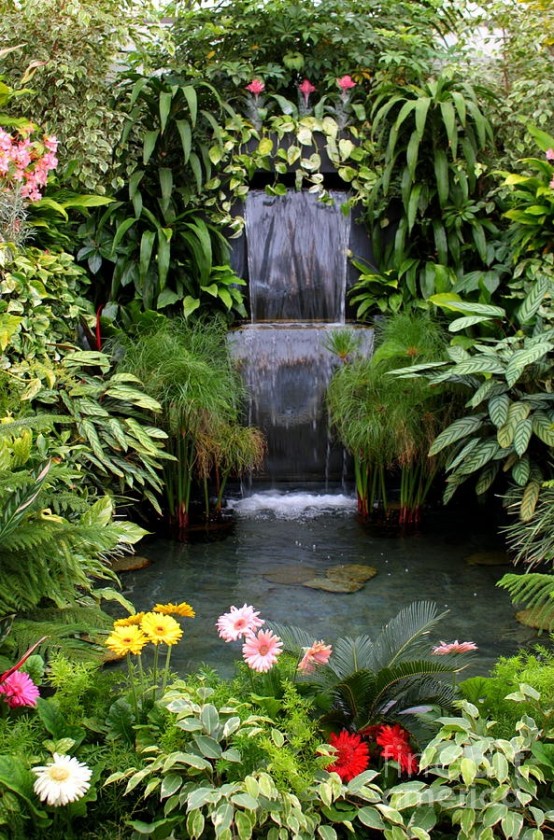
Here, boulders create the stream banks and waterfalls, guiding the water back to the basin, where it is recirculated. A spillway at the top disperses the water into the first waterfall and stream. Other accessories including an auto fill float, and water treatment options, may also be installed in the pump vault.įrom the vault water is pumped up to the top of the stream. In this basin, a pump vault is built which will house the pump that powers the water feature. This basin is usually hidden with a layer of River gravel. Underground, a basin is constructed that holds the water for the entire feature. How does a water feature work? Understanding how a disappearing waterfall works requires starting at the bottom of the waterfalls. Concrete features bring with them a host of their own problems, and are avoided for those reasons. In this article, we will not be devoting any discussion to concrete water features. It can be difficult to know what questions to ask when trying to decide if a pondless waterfall is the right choice for your backyard. I even know its there, and I hardly ever see it because your eye is drawn to the rocks rather than the plastic.Like any new proposition, building a pondless waterfall brings many new questions to mind. It still shows in a couple places, but no one really looks close enough for it to matter.


As you can see in the sixth picture, I used a large piece of slate to cover the main body of the skimmer and smaller rocks around it and in front of the intake. Once the faceplate is screwed in over the liner you will cut out the square of liner that is now covering the intake. make sure that there are no folds in the liner around the faceplate as this will disrupt the seal and it will leak. The faceplate doubles as a gasket which seals the skimmer so that water can't leak between the skimmer and the liner. The liner is screwed in tightly between the faceplate and the rest of the skimmer (see pic 5). Once you have your skimmer in the position you want, you need to attach the liner. It might also be a good idea to put gravel and sand at the bottom so that you can get the skimmer perfectly level. Make sure that the soil underneath is very compact and level. It is very important that the skimmer sits level in the hole. Dig the hole to the correct depth so that the intake is positioned at the right height for the water level to be where you want it.

There is a line on the front plate of the skimmer. The skimmer goes in a separate hole dug next to the pond so that the skimmer intake is right along the edge of the pond. So I will attempt to describe it using pictures of it already installed. It is at this point that I apologize that I did not take pictures of the skimmer being installed. Though skimmers are expensive, so talk about it with your pond supplier. The have filters that take in debris and make cleaning a bit easier. You may want to also consider a skimmer, especially if you are building a larger pond. Aim for the sides to step in segments of less than 3 feet.

The walls on the deep end of my pond are about 3 feet, but that really is a bit tall (I didn't have the room for more steps). If you are make a deeper pond, dig the sides in steps so that each wall is shorter, and therefore more stable. Also be sure to slope the sides slightly so that it is easier when you put in the rocks later. You might also want a shallower shelf around the perimeter of the pond to put potted plans on. My pond ended up being about 9 feet wide by 4 feet and 3 feet deep. Goldfish are much smaller, and can stand a smaller pond. Koi need a LOT of surface area and it is best to have it at least 3 feet deep to prevent them getting eaten by birds. How big you want the pond depends on aesthetics, but also think about what you want in the pond. You may not need all the dirt, especially if you are on a steep hill like mine. This is especially important if you are building it on flat ground, as it will give you the height you need for the falls. Pile all of the dirt where your waterfall will go as this will be how you will sculpt the contour of the falls. First dig the outline of your pond so you can see how big it will be.


 0 kommentar(er)
0 kommentar(er)
